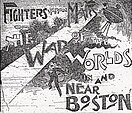
Mars, the fourth planet from the Sun, has appeared as a setting in works of fiction since at least the mid-1600s. Trends in the planet's portrayal have largely been influenced by advances in planetary science. It became the most popular celestial object in fiction in the late 1800s, when it became clear that there was no life on the Moon. The predominant genre depicting Mars at the time was utopian fiction. Around the same time, the mistaken belief that there are canals on Mars emerged and made its way into fiction, popularized by Percival Lowell's speculations of an ancient civilization having constructed them. The War of the Worlds, H. G. Wells's novel about an alien invasion of Earth by sinister Martians, was published in 1897 and went on to have a major influence on the science fiction genre.

Wernher Magnus Maximilian Freiherr von Braun was a German-American aerospace engineer and space architect. He was a member of the Nazi Party and Allgemeine SS, the leading figure in the development of rocket technology in Nazi Germany, and later a pioneer of rocket and space technology in the United States.

Alien invasion or space invasion is a common feature in science fiction stories and film, in which extraterrestrial lifeforms invade the Earth to exterminate and supplant human life, enslave it, harvest people for food, steal the planet's resources, or destroy the planet altogether. It can be considered as a science-fiction subgenre of the invasion literature, expanded by H. G. Wells's seminal alien invasion novel The War of the Worlds, and is a type of "first contact" science fiction.

Robert Hutchings Goddard was an American engineer, professor, physicist, and inventor who is credited with creating and building the world's first liquid-fueled rocket, which was successfully launched on March 16, 1926. By 1915 his pioneering work had dramatically improved the efficiency of the solid-fueled rocket, signaling the era of the modern rocket and innovation. He and his team launched 34 rockets between 1926 and 1941, achieving altitudes as high as 2.6 km (1.6 mi) and speeds as fast as 885 km/h (550 mph).
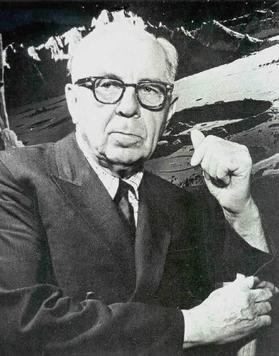
Chesley Knight Bonestell Jr. was an American painter, designer, and illustrator. His paintings inspired the American space program, and they have been influential in science fiction art and illustration. A pioneering creator of astronomical art, along with the French astronomer-artist Lucien Rudaux, Bonestell has been dubbed the "Father of Modern Space art".
Edisonade is a genre of fictional stories about a brilliant young inventor and his inventions, many of which would now be classified as science fiction. This subgenre started in the Victorian and Edwardian eras and had its apex of popularity during the late 19th and early 20th centuries. Other related terms for fiction of this type include scientific romances. The term was introduced in 1993 by John Clute in his and Peter Nicholls' The Encyclopedia of Science Fiction. It is an eponym, named after famous inventor Thomas Edison, formed in the same way the term "Robinsonade" was formed from Robinson Crusoe.
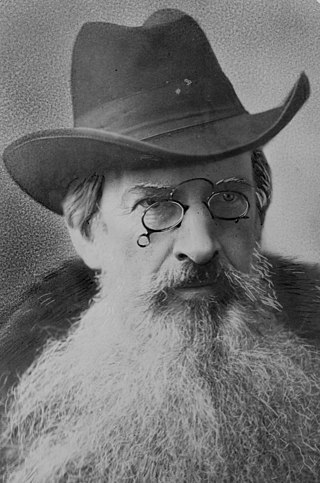
Gardiner Greene Hubbard was an American lawyer, financier, and community leader. He was a founder and first president of the National Geographic Society; a founder and the first president of the Bell Telephone Company which later evolved into AT&T, at times the world's largest telephone company; a founder of the journal Science; and an advocate of oral speech education for the deaf.

The Martians, also known as the Invaders, are the main antagonists from the H.G. Wells 1898 novel The War of the Worlds. Their efforts to exterminate the populace of the Earth and claim the planet for themselves drive the plot and present challenges for the novel's human characters. They are notable for their use of extraterrestrial weaponry far in advance of that of mankind at the time of the invasion.

Scarlet Traces is a Steampunk comic series written by Ian Edginton and illustrated by D'Israeli. It was originally published online before being serialised in 2002, in the British anthology Judge Dredd Megazine. A sequel, Scarlet Traces: The Great Game, followed in 2006.

Edison's Conquest of Mars is an 1898 science fiction novel by American astronomer and writer Garrett P. Serviss. It was written as a sequel to Fighters from Mars, an unauthorized and heavily altered version of H. G. Wells's 1897 story The War of the Worlds. It has a place in the history of science fiction for its early employment of themes and motifs that later became staples of the genre.
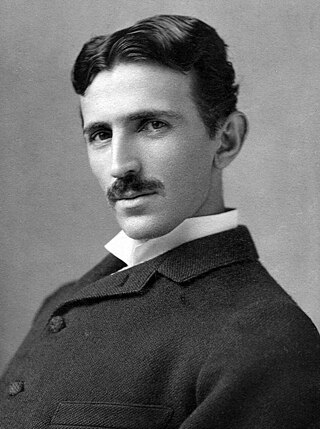
Nikola Tesla is portrayed in many forms of popular culture. The Serbian-American engineer has particularly been depicted in science fiction, a genre which is well suited to address his inventions; while often exaggerated, the fictionalized variants build mostly upon his own alleged claims or ideas. A popular, growing fixation among science fiction, comic book, and speculative history storytellers is to portray Tesla as a member of a secret society, along with other luminaries of science. The impacts of the technologies invented by Nikola Tesla are a recurring theme in the steampunk genre of alternate technology science-fiction.

The Boston Evening Transcript was a daily afternoon newspaper in Boston, Massachusetts, published for over a century from July 24, 1830, to April 30, 1941.
Space warfare is a main theme and central setting of science fiction that can trace its roots back to classical times, and to the "future war" novels of the 19th century. With the Modern Age, directly with franchises as Star Wars and Star Trek, it is considered one of the most popular general sub-genres and themes of science fiction. An interplanetary, or more often an interstellar or intergalactic war, has become a staple plot device. Space warfare, represented in science fiction, has a predominant role, it is a central theme and at the same time it is considered parent, overlapping genre of space opera, military science fiction and Space Western.
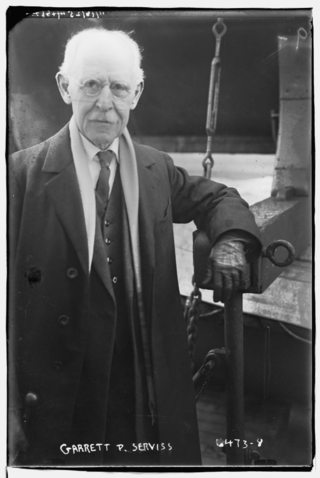
Garrett Putnam Serviss was an American astronomer, popularizer of astronomy, and early science fiction writer. Serviss was born in Sharon Springs, New York and majored in science at Cornell University. He took a law degree at Columbia University but never worked as an attorney. Instead, in 1876 he joined the staff of The New York Sun newspaper, working as a journalist until 1892 under editor Charles Dana.
Robert Godwin is a British author who has written about rock music and spaceflight. Early in his career he was a rock music impresario who managed a venue in Burlington, Ontario, and founded Griffin Music.
With the advent of robotic and human spaceflight a new era of American history had presented itself. Keeping with the tradition of honoring the country's history on U.S. postage stamps, the U.S. Post Office began commemorating the various events with its commemorative postage stamp issues. The first U.S. Postage issue to depict a U.S. space vehicle was issued in 1948, the Fort Bliss issue. The first issue to commemorate a space project by name was the ECHO I communications satellite commemorative issue of 1960. Next was the Project Mercury issue of 1962. As U.S. space exploration progressed a variety of other commemorative issues followed, many of which bear accurate depictions of satellites, space capsules, Apollo Lunar Modules, space suits, and other items of interest.

The War of the Worlds is a science fiction novel by English author H. G. Wells. It was written between 1895 and 1897, and serialised in Pearson's Magazine in the UK and Cosmopolitan magazine in the US in 1897. The full novel was first published in hardcover in 1898 by William Heinemann. The War of the Worlds is one of the earliest stories to detail a conflict between humankind and an extraterrestrial race. The novel is the first-person narrative of an unnamed protagonist in Surrey and his younger brother who escapes to Tillingham in Essex as London and southern England is invaded by Martians. It is one of the most commented-on works in the science fiction canon.

The Treasury of Science Fiction Classics is an anthology of science fiction stories, edited by Harold E. Kuebler, published in hardcover by Hanover House in 1954 with dust jacket art by Richard Powers. A Science Fiction Book Club edition followed later that year, but the volume has not otherwise been reprinted.
Milton Lehman (1917–1966) was an American freelance journalist and book author, best known for his 1963 biography of rocket scientist Robert Goddard.
